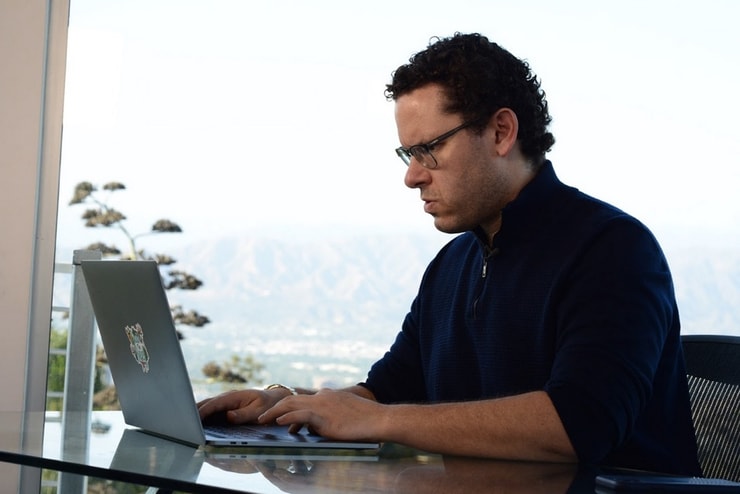Equity trading may sound serious and complicated, but chances are you already have an inkling as to what it entails. The terms equity market and stock market are actually interchangeable, so equity trading refers to trading equities or stocks.
Regardless of which term you like better, it’s important to understand the basics of this type of trading before you can become an effective trader.
In this post, I’ll detail all things equity market so that you can gain a better understanding of the platform on which your trades are conducted.
After reading this guide, you can be better informed and better positioned to take advantage of the opportunities the equity market has to offer.
Table of Contents
Basics of the Equity Market

Let’s start at the beginning: What is the equity market?
An equity market is a place where companies can raise necessary capital from investors. The market is like the rendezvous point where buyers and sellers come together.
Shares of the company’s stock are issued, which are traded by investors. The investors have the opportunity to profit by investing in shares of the company.
The shares can be traded through exchanges or what is called “over the counter” markets. Here’s a brief description of each:
Exchanges: This is a marketplace where stocks/securities, commodities and derivatives are traded.
The reason the exchange exists is to make sure that trades are conducted in an ethical and fair way, and so that the market can operate efficiently. Basically, it’s the platform that acts as the vehicle for trading, and offers certain protections to traders by mandating standards for the companies listed.
Over-the-Counter Markets: This is a different type of market for trading. In an over-the-counter (OTC) market, the dealers are also the market makers, quoting the prices at which they’ll buy and sell different securities.
In the OTC market, things aren’t quite as stringent as in the exchanges. There can be more privacy for buyers, and for companies listed, as well. They don’t have to meet the same stringent standards and regulations for listing.
This can be good in that it gives companies an opportunity to be listed. But it can also be bad because this system can tend to invite more fraud. Many penny stocks are listed on OTC exchanges.
Difference Between Equity and Commodity Markets
OK, so an equity market is the stock market. But what about this other term you’re hearing tossed around: the commodity market?
The commodity market is like the stock market in that it’s a marketplace where investors can buy or sell. But what’s different is what is being sold.
In the equity market, investors are trading shares of stock in companies.
In the commodity market, investors are trading in raw materials, or items that might be used to produce other goods. So, for instance, commodities might include gold, silver, precious metals, and so on.
It’s possible to buy the same commodity from a number of sources and then to sell to a variety of buyers.
There are a few other key differences between the equities market and the commodities market, which are:
1. The duration of the listing. Stocks can stay on exchanges for a very long time — for instance, what is today the Consolidated Edison Company of New York (ConEd) was originally listed under its original name, New York Gas Light, on the New York Stock Exchange in 1824.
Commodities, on the other hand, are traded via futures contracts. A futures contract is where investors will buy or sell based on a desired future price of the commodities, and will make a contract committing to buy if the price reaches that point.
That means that it’s a bit more finite.
2. Analysis and research. The way that a trader might approach a trade will be a little bit different with an equity versus a commodity.
In the stock market, you’ll rely on a combination of fundamental analysis and technical analysis to figure out a stock’s story.
Basically, with stocks, you use a combination of these research methods to identify a good company to invest in, with a stock that has solid, predictable performance.
In the commodity market, these raw materials are less subject to company news and earnings reports, and more due to the supply and demand based on industry.
Commodities tend to have seasons and trends, so analyst recommendations are frequently a part of the research for this type of investing.
In both cases, the equity market and the commodity market have benefits to offer investors.
In the stock market, you could earn profits or dividends.
With commodities, you can gain profits when the goods in question gain value. Some investors also consider commodities a good investment during times of economic uncertainty, as they are physical possessions which will still be in demand.
Importance of the Equity Market

How big is the equity market, and what is its impact on the economy?
The stock market is hugely important to a country’s economy. To consider the impact it has, consider the primary function of the equity market: building businesses.
When a company wants to raise money to expand or create new business, they can take out a loan from the bank or they can issue shares through the stock market.
The stock market makes a piece of the company available for sale to the public, so that you and I can purchase a stake in it.
To do this, they need to be listed. On bigger exchanges, companies must meet stringent standards to be listed.
As an investor, you can benefit from the company’s growth, receiving dividends or seeing the price of the stock appreciate over time.
In this way, the stock market helps build companies, which helps build industry and commerce. This has a big effect on the economy, contributing to the employment and unemployment rates, production, and so much more.
The government and central banks will generally keep a close eye on what’s going on in the stock market, as it affects them too.
OK, so that’s the primary function of the equity market … but it’s not the only function.
The equity market also acts as a platform for the stock exchange. This is where investors can buy and sell stocks. These transactions are executed through a brokerage account, which acts as your buying or selling agent in the market.
This is how I use the equity market to try to gain profits: through investing in shares of stocks that I believe will go up or down in value, and either selling or short selling depending on which way I think the stock will go.
So, as you can see, the equity market isn’t just a place for companies to foster new growth, but it’s also a place for stock trading. The stock market renders stocks into liquid assets, which can be sold or bought at any time.
How To Trade in The Equity Market

If you want to get into equity trading, there are a number of different directions you can take.
Ultimately, traders get into the market because they want to profit. But how do you want to make that happen?
You could take the old “buy low, sell high” approach. Or, you could try your hand at short selling and try to gain profits as stocks go down in value.
Regardless of your approach, there are some nuts and bolts that remain constant, so let’s go over those.
More Breaking News
- Spotify’s Recent Surge: Breaking Down the Unexpected Growth and Future Prospects
- Capri Holdings: Strategic Moves or Delays Ahead?
- First Majestic’s Silver Lining: Will the Momentum Last?
Opening a Trading Account
Even though you may be the investor in a given stock, you’re usually not conducting the transaction directly. Instead, it’s handled through a brokerage account, which is the entity that facilitates trades.
At one time, you would have to phone or meet with a broker. These days, however, there are a lot of different options, and for the convenience factor most traders will use online brokers.
There are plenty of different online brokers. While this is a good thing overall, it can make the decision tricky because the many options can lead to decision fatigue.
In a recent post, I detailed tips for choosing an online broker which will help you get started searching for the best broker for you. This other post is also a must-read for tips on avoiding brokerage fees.
Equity Market Analysis
Fact: There’s no such thing as a sure thing in investing.
When it comes to equities, there’s an inherent level of risk at all times, no matter what stock you choose. That risk level will go up depending on how volatile the stock is, but there’s never a point at which there’s zero risk.
Higher-priced stocks from large-cap companies will generally have a lower level of risk as they are more “proven.” However, this also means that they may not deliver returns that are as big or as quick as the stocks offered by small- or micro-cap companies.
My specific approach is to target lower priced and more volatile stocks. These are the techniques I teach my students, too.
Generally, these lower-priced stocks are seen as riskier than many higher-priced stocks, because the companies are not as proven and are listed on exchanges that are not as highly regulated.
However, I’ve found that this this level of risk is what allows for the potential opportunities!
Because all investments carry a level of risk, it’s important to perform research before buying any stock.
However, it’s particularly vital with lower priced stocks, as they move faster and you want to mitigate risk in any way you possibly can. This means that as a trader, you need to do your research.
Usually, you’ll start by making a watchlist of stocks that are moving, then narrowing down your choices and getting into analysis.
Technical and Fundamental Analysis
Both technical and fundamental analysis are key modes of research for investors. Neither is more important than the other, but they rely on each other and by doing both you can get a better picture of whether or not you’re choosing a good investment.
Technical analysis is the numbers part of the game. Here, you’re looking at a stock’s past performance based on charts and numbers.
You’ll review historical data to determine the stock’s performance over time. This can help you see if there are trends or patterns that could be predictable, meaning that you can gain an advantage in terms of timing your trade and setting appropriate entry and exit points.
When you perform technical analysis, you’ll look at things like the price action or how the price of the stock has moved over time. Does it have a history of gaining at a particular time of year, for instance?
It’s not 100%, but when a stock performs a certain way, it usually will do something similar again in the future. By looking at the stock’s historical data, you can look for patterns or spikes that can help you take advantage of the trade.
Fundamental analysis, on the other hand, is a little bit more like being a private eye. This is where you research the company offering the stock to determine if they are on a trajectory that could potentially affect the stock price.
With fundamental research, you’re looking at things like the company’s earnings reports, press releases, news, and analyst reports. Basically, you’re looking for any buzz around the company that might indicate that the stock price might go up (or down).
By combining technical and fundamental research, you can seriously get a much better feel for the investment.
Finding Key Patterns

Show me the money? Nah. Show me the pattern, when it comes to equity trading.
Your analysis will help you make sense of and identify key patterns.
I rely on patterns when trading equities. I like to find things that I can predict — I don’t like to gamble.
When I invest money, I want to make money. Even though I don’t win all of the time (as you can see by my publicly documented trades here) and understand that I can’t, I at least try to whenever I make a trade. Patterns help me make the decisions based, partially on, what has most reliably yielded profits.
For example, one of my favorite patterns is what I call the “stair-stepper.” This is a stock that gradually and incrementally rises and then falls in price, so that when you look at the chart, it looks like the shape of a staircase.
When you see this stair-stepper pattern where the stock is rising and falling then has prolonged periods of little price movement, you can better plan your entry and exit based on when you think the next price rise or fall will take place, either buying or short selling.
Of course, with the stair-stepper you have to be very careful, because if the “steps” become too steep it can be very hard to time out.
That’s just one pattern, though. I teach plenty of them. In my pennystocking e-guide, I detail more patterns in greater detail.
Importance of a Stock Portfolio
Rarely does a trader just buy or sell one particular type of stock or a stock issued from one company and call it good.
For one thing, your earning potential is limited. For another, it’s kind of like putting all your eggs in one basket — if you only invest in one industry and there’s a bubble that bursts, you could lose big.
This is why it’s important to have a diverse portfolio of stocks, featuring different industries, sectors, and that follow different trends.
If you have a diverse portfolio, it minimizes your personal risk as a trader. But it also balances things out. For instance, one part of your portfolio might go down while another one goes up. These fluctuations are natural, and having the diversity will help keep things even over time.
Equity Market Trading Tips
Investing in the equity market is how I’ve made my fortune …
While I was able to turn my $12,415 bar mitzvah money into millions, it didn’t happen overnight.**
I learned the rules of the market and I was obsessive about learning what patterns could help me decide on the trades with the most potential.
I wasn’t right all of the time, but enough of the time to be profitable.** Over the years, I’ve learned a thing or two about investing in the equity market.
Maybe best of all, I found my methods to be effective during both bull and bear markets, which is essential for a trading career. The market is ever-changing, and it’s important to use techniques that can adapt with the market. After all, with articles like this threatening doom and gloom, it’s hard to know what to do sometimes.
Here are some of my equity trading tips:
Choose the Right Broker
To execute trades, you’ll need a brokerage account. But don’t just go with the first one you Google.
This is is who you’re using to execute your trades, so it’s important to choose a good broker. After all, you probably wouldn’t open an account with a bank without first checking their policies on overdraft fees, minimum deposits, and so on, right? Right.
So you need to do similar due diligence with potential brokers. You don’t want to be surprised later on by yearly fees, closing fees, or percentages taken out of transactions that are higher than you thought.
Take the time to research different brokers. Ask around with other traders, read reviews, and look at the broker’s website to view their policies. After you’ve considered a variety of sources, make your decision. Remember: The right broker for another trader might not be right for you.
In this post, I detail some of my favorite online brokers including some of the pros and cons of each one. Use that as a starting point.
Use Stop Orders

Stops, whether executed as orders or as mental stops, are essential for equity trading. Trading is a mental game as much as a numbers game, and stops help keep you in check.
A stop order is an order type where you specify that you want to buy or sell a stock when it reaches a specific price, which is called the stop price. Once this price has been reached, your stop order is automatically executed as a market order.
If you’re buying, it’s called a buy stop order, and it’s executed when the stop price exceeds that current market price. If you’re selling, it’s called a sell stop order, and it’s executed when the stop price dips below the current market price.
Related to the stop order is the trailing stop order, which is also designed to help protect you from losses. But instead of a specific price, it specifies a specific percentage away from the stock’s current market price.
The trailing stop offers a little more flexibility than the fixed stop order which needs to be manually reset. The trailing stop can help you specify how much you’re willing to lose, but doesn’t put a limit on how much you can profit. You can learn more about the trailing stop in this post.
The stop order can be advantageous if you don’t think you will be by your computer but you want to lock yourself into a trade in which you see a lot of potential. It can also help you protect your assets) if you’re worried about losing money.
A mental stop is a similar approach, but without executing the order specifically as a stop order. Instead, you make the mental decision and pinkie-swear yourself that you’ll only enter or exit a trade at these specific prices that you’ve set.
Trouble is, mental stops can be easier to break, because like I said, traders get emotional. You have to have a lot of willpower to stick with it.
Practice Before You Start Investing
Few traders are ready to jump right in and wager money on trades right away. Approach the market cautiously and practice before you trade, otherwise you could lose money and become discouraged.
Paper trading, or simulated trading, can be a great way to get used to the mechanics of executing orders and testing out your theories for trades and getting a lay of the land. The look and feel of paper trading platforms is practically identical to an actual trading interface, but you’re not risking real money.
Where’s the fun in that, you ask? Well, it’s not about fun — it’s about preserving your capital! Paper trading can help you get up to speed on the logistics of trading so that you don’t make dumbass mistakes when you actually start spending money.
It’s much easier to deal with making mistakes in faux trades than actual trades with your money. I recommend the StocksToTrade paper trading platform.
Trading Challenge
Reading through this post, you’ve gained a good basic understanding of equity trading. If you want to take your trading to the next level, consider joining my Trading Challenge.
I learned all that I know about the equity market by reading books, studying the market, and plenty of trial and error. I strongly believe that with mentorship and the proper teacher, I probably would’ve become successful way faster.
That’s why I created the Trading Challenge. I had to learn things the hard way and go through a lot of bullshit to find methods that worked. I want to help my students approach the market in a straightforward way without the confusion I had to deal with.
I want to teach you the necessary skills so that you can create your own path as a trader. The Challenge includes lessons, webinars, blog posts, watchlists, and more.
I also guide you through how I approach trades. I do this by trading like my students.
I purposefully trade with a small account so I am more on the same level as my students. This way, I can tailor my lessons to the market as it is right now, and how they are seeing it.
The Bottom Line
Equity trading allows companies and investors to potentially profit, which is vital to maintaining a healthy economy. But that’s not the only benefit. It also provides the opportunity for investors like you and me to profit from the fluctuations in the stock prices.
By gaining a better understanding of the mechanics of equity trading and the equity market, you can be better poised to take advantage of these opportunities as a trader. When you gain this edge, you’ll likely have a better win rate, and are much more likely to build your account!
Have you considered equity trading? Why or why not? Sound off with a comment.


Leave a reply